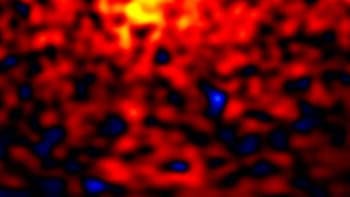Drew Feustel is a 46-year-old US geoscientist who, in 2009, did something that very few human beings had done before him. Feustel left the Earth on a NASA mission to the Hubble Space Telescope, where he carried out a series of space-walks to repair this iconic instrument. He then returned to space in May 2011, when he served as the lead space-walker on Space Shuttle Endeavour‘s final mission to the International Space Station.
Back on Earth, Feustel joined Physics World to give this exclusive interview about his experiences at the final frontier. Early in the interview, he gives a vivid account of the feelings he experienced in the final moments before his first take-off.
When the rocket lights, and it hits you in the back like someone’s smacked you with a frying pan, you realize you’re going to space
“You don’t really believe that the launch is going to happen because you’ve waited all this time to get into space. But when they get to 10 and then they keep going down to 1, you realize that somebody’s serious about putting you into space,” he says. “When they get to zero, and the rocket lights, and it hits you in the back like someone’s smacked you with a frying pan, you realize that now’s the time you’re going to space – and you’re no longer going to stay on the planet.”
Replacing Hubble’s batteries
Feustel was sent to the Hubble Space Telescope with six other astronauts as part of STS-125, the final manned servicing mission. The crew’s task was to replace the battery units and to make some upgrades to Hubble’s scientific instruments. Two years later, Feustel was part of the six-person crew aboard STS-134, which went to the International Space Station on the 25th and final flight of Space Shuttle Endeavour. This mission successfully delivered the Alpha Magnetic Spectrometer (AMS), an instrument designed to detect cosmic rays and to search for dark matter.
When talking about the Hubble mission, Feustel speaks of the crew’s awareness of the vital role Hubble has played in astronomy. “We believe it’s one of the most important scientific instruments that humans have ever built. It’s taught us about the solar system, the origins of space, the universe that we live in, and also about our future,” he says.
There are points in the interview when Feustel seems to exude an almost otherworldly sense of calm. But, he also maintains a good sense of humour when describing his rare experiences, for instance when he talks about the space-walks he performed as part of STS-125 and STS-134. “The most important thing about space-walks is to not let go. Because you don’t want to separate yourself from the vehicle that has your ride back to the planet Earth,” he jokes.
Finding the path to space
But perhaps above all, Feustel comes across as an intensely focused individual who dreamed of going to space as a child and had the audacity to never lose sight of that dream. “I never knew what my path to spaceflight would be, but I knew that I believed it would be a part of my life,” he explains.
I never knew what my path to spaceflight would be, but I knew that I believed it would be a part of my life
Feustel says that his experiences in space have altered the way he views the Earth, particularly when it comes to environmental concerns. “Nowhere on the ground can you really see the atmosphere, except that we see the blue sky. But when you’re in space and you look down upon the planet, you can easily see that thin veil that separates us from the vacuum of space – and you realize how fragile it is and how important it is for us to protect the planet.”
Feustel did a degree in geophysics and attained his PhD from Queen’s University in Canada. After spending several years working in the mining and geological exploration industries, he was selected by NASA as a mission specialist in July 2000.
This interview was filmed at the AGU Fall Meeting 2011.



